Imphal: It is lunchtime and Benaobi Yumnan is hungry. The 8-year-old timidly joins the queue outside the school kitchen to receive her portion of dal (lentils) and rice. But hesitation gets the better of her, as she allows others to bypass her and ends up as the last person in the queue.
From a distance, Thadoisana (who identified herself by a single name) — smartly dressed in school uniform and polished shoes — observes Benaobi, signaling to her to act with more confidence.
She soon realises, however, that Benaobi wasn’t making much progress, and walking up to her, takes her hand and leads her away. Both girls then find an empty spot in the school corridor, sit together and start sharing the food from the lunch box Thadoisana carried with her.
As ThePrint watched Wednesday, Thadoisana opened a packet of cake and fed her “best friend”. Their faces brightened up with smiles as they talked. Seeing them together, it is difficult to imagine that just a month back the two didn’t know each other.
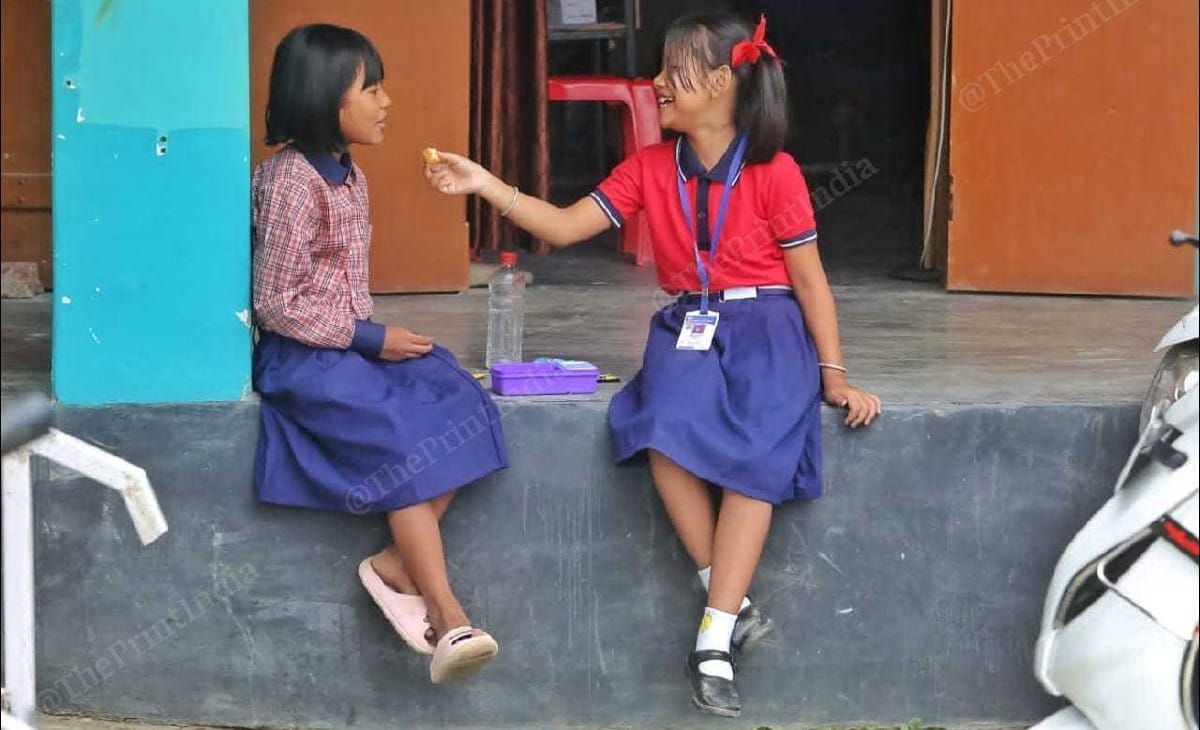
Last month, Benaobi and her family — Meitei residents of Moreh in Manipur’s hill district of Tengnoupal — were allegedly forced out of their home amid the ongoing ethnic clashes between the state’s Kuki and Meitei communities. Little did Benaobi know then that in the midst of the chaos, she would find a friend, who would become her confidante in new and unfamiliar surroundings.
By the time she found Thadoisana, Benaobi is said to have witnessed homes being allegedly burnt, people fleeing for their lives, and the turmoil of violence. She eventually found herself at a relief camp for the displaced in state capital Imphal.
Now, even as she battles the memories of the turmoil, Benaobi is also adjusting to a whole new life, in strange surroundings filled with unfamiliar faces.
The presence of Thadoisana, her newfound best friend, however, appears to provide her some solace. “She is my best friend. She helps me with everything,” she says, clutching Thadoisana’s hand. Both smile at each other.
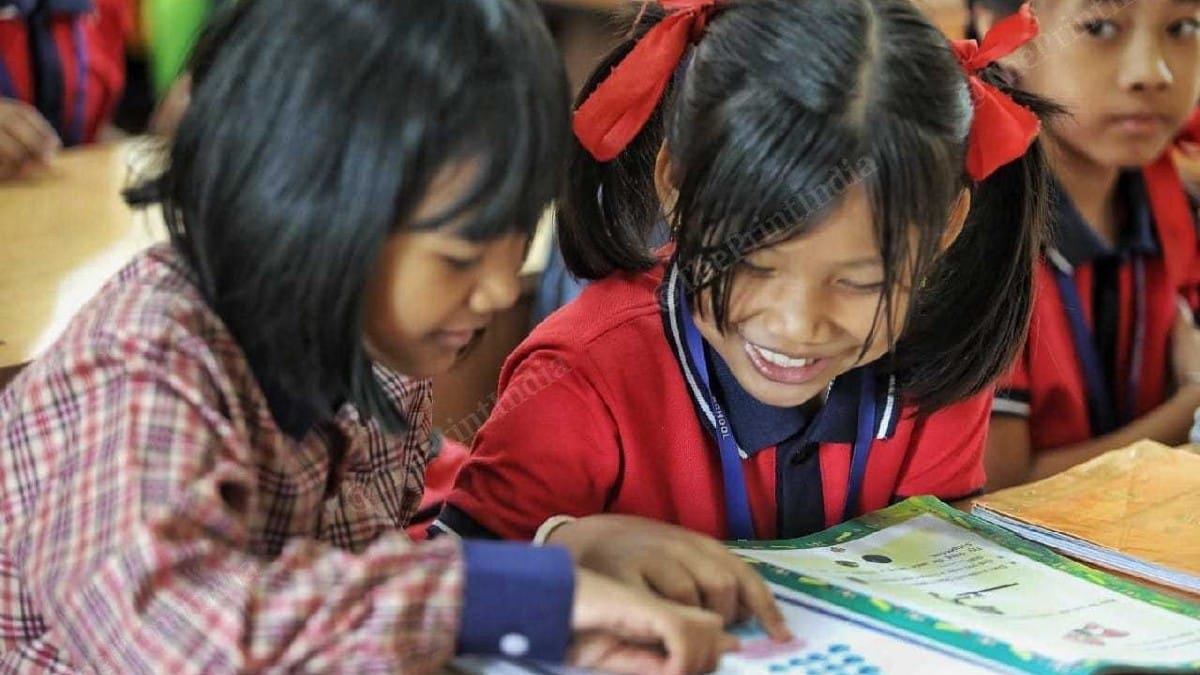
According to data shared by the Eastern Ideal High School in Singjamei Wangma in Imphal’s Akampat area, more than 199 displaced Meitei children like Benaobi are now studying here, striving to find their place in a new environment.
Manipur is divided into hill and valley districts, with the former dominated by Kuki and other tribes, while the valley is dominated by the non-tribal Meiteis. Imphal is in the valley.While the hills constitute 90 percent of Manipur’s area, most public facilities schools and hospitals are concentrated in the valley.
Ethnic clashes between the tribal Kuki and non-tribal Meitei communities erupted on 3 May, following a ‘Tribal Solidarity March’ taken out to oppose the demand for inclusion of Meiteis in the Scheduled Tribe (ST) category and for what was described as an effort to secure the rights and constitutional safeguards of the ethnic Kuki and their sub-tribes. According to police data, the violence has so far claimed over 157 lives and displaced more than 50,000.
The state education department has asked all district and school authorities to allow displaced children from both communities to be enrolled in state-run and government-aided schools. The state government has also provided these children with school uniforms, books and stationery.
However, there is one glaring distinction that sets them apart from their peers — school shoes. At the Eastern Ideal High School, while the regular students wear black school shoes, the displaced children from the camp are mostly seen wearing slippers.
On Friday, state Education Minister Thounaojam Basanta Kumar Singh announced that the Manipur government had been taking steps to ensure continuity in the education of all displaced students taking shelter in relief camps set up for both communities. The government has been able to enroll 60 percent of the displaced students in schools in the vicinity of relief camps around the state, he added.
Eastern Ideal High School is one such institution.
A teacher at the school told ThePrint that even before these children were admitted to schools last month, teachers had been going to relief camps to teach them. Special classes were also held for displaced children every day from 8:30 am to 10:30 am at school buildings, she said.
“That went on for a month. Although we were teaching them, the children were still very disturbed. Being surrounded by other displaced people reminded them of their own miseries. Since now, they have been made a part of the larger school, it is much better,” says Yumnam Nganthoi, a senior teacher at the school in Akampat.
Also Read: Meitei village surrounded by 6 Kuki settlements defies violence with unity — ‘we grew up together’
Coping with change
Teachers at the Eastern Idea High School are now working extra hours to ensure that the displaced children feel welcome and are able to catch up with their peers.
According to the teachers, the syllabus and teaching methods differ between the state’s valley and hill regions, which is why they are making extra efforts to make the displaced children from the hill regions feel included and not out of place.
“We are giving them foundation courses so that they are able to catch up with the other students in the class,” says Nganthoi.
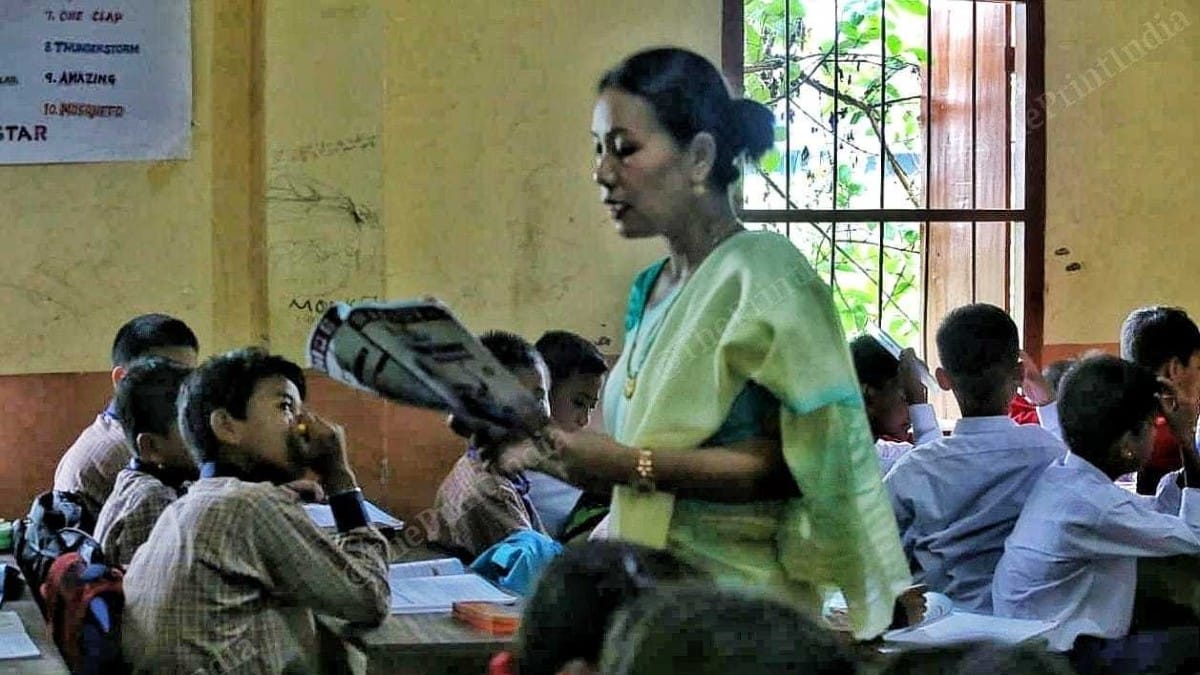
Meiteis living in hill areas are culturally different from those living in the valley.
The teacher adds: “The way they [the hill students] talk is different, they do not get a lot of references and hence, they find it difficult to adjust, but with the efforts of the teachers, things have become much better now.”
The most challenging aspect, according to teachers, is getting students to pay attention as they are still affected by the trauma of being forced out of their homes.
“Children have impressionable minds, and it is not easy for them to forget what they have experienced,” says Nganthoi. “Their attention span is limited. Some days they are happy, smiling and interacting with other children, but there are days when they prefer to remain aloof and distant.”
However, the teachers have now devised new methods of teaching in a “playful manner” with an aim to engage students.
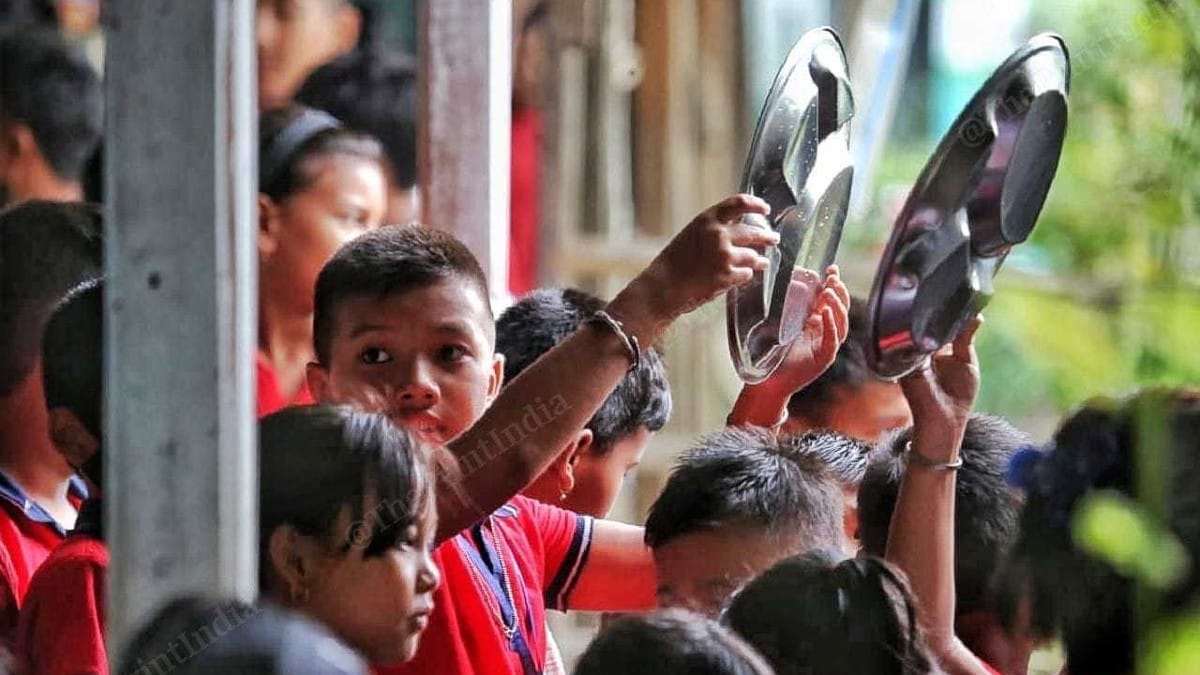
“We teach through drawings and games, instead of relying solely on textbooks. Slowly they have started picking up and are now catching up with regular students. We also encouraged other students to assist them and it is heartening to see that they are going the extra mile to help their fellow classmates,” says Nganthoi.
As ThePrint watched, six-year-old Thoibi (identified by a single name), who also came from Moreh after her home was allegedly destroyed in the ethnic clashes, needs to use the washroom. She whispers something to her friend Naorem Yaikhombi, who sits beside her. Yaikhombi promptly gets up, seeks permission from the teacher, takes Thoibi’s hand and escorts her out of the class.
“Just a month ago, they did not even know each other. They come from such different backgrounds [hill and valley], but look at them now. These girls have now become inseparable. Now, while Thoibi is in the washroom, Naorem will stand guard outside and then bring her back to the class,” says the teacher with a smile.
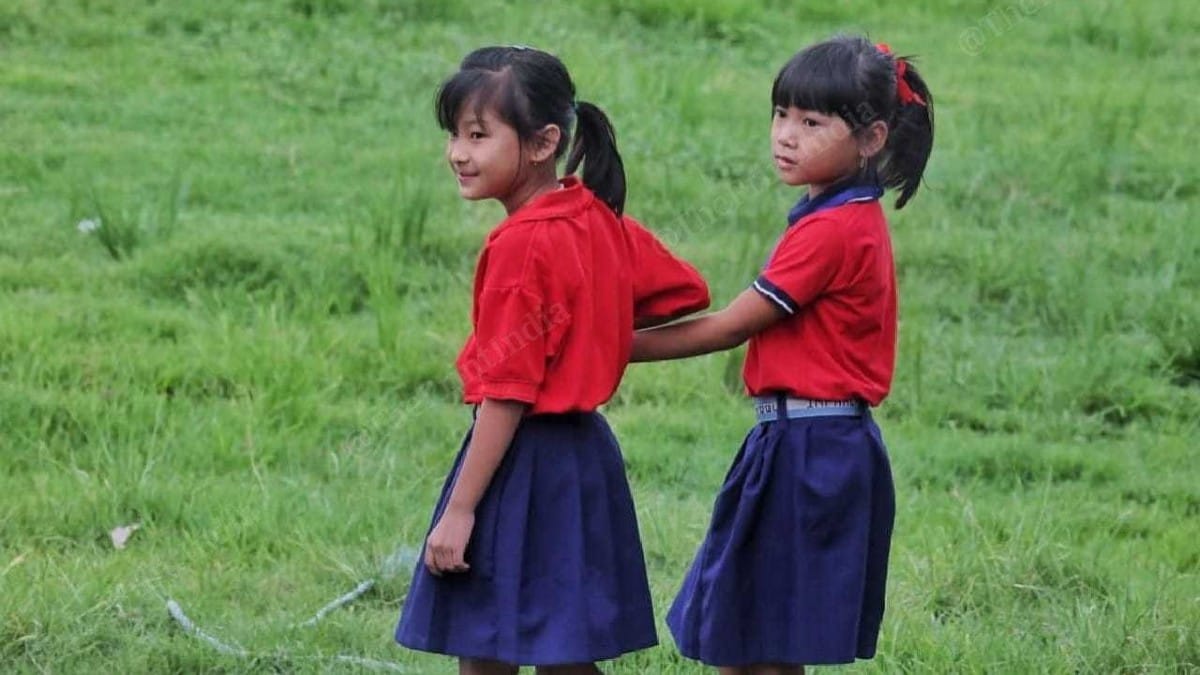
(Amrtansh Arora)






